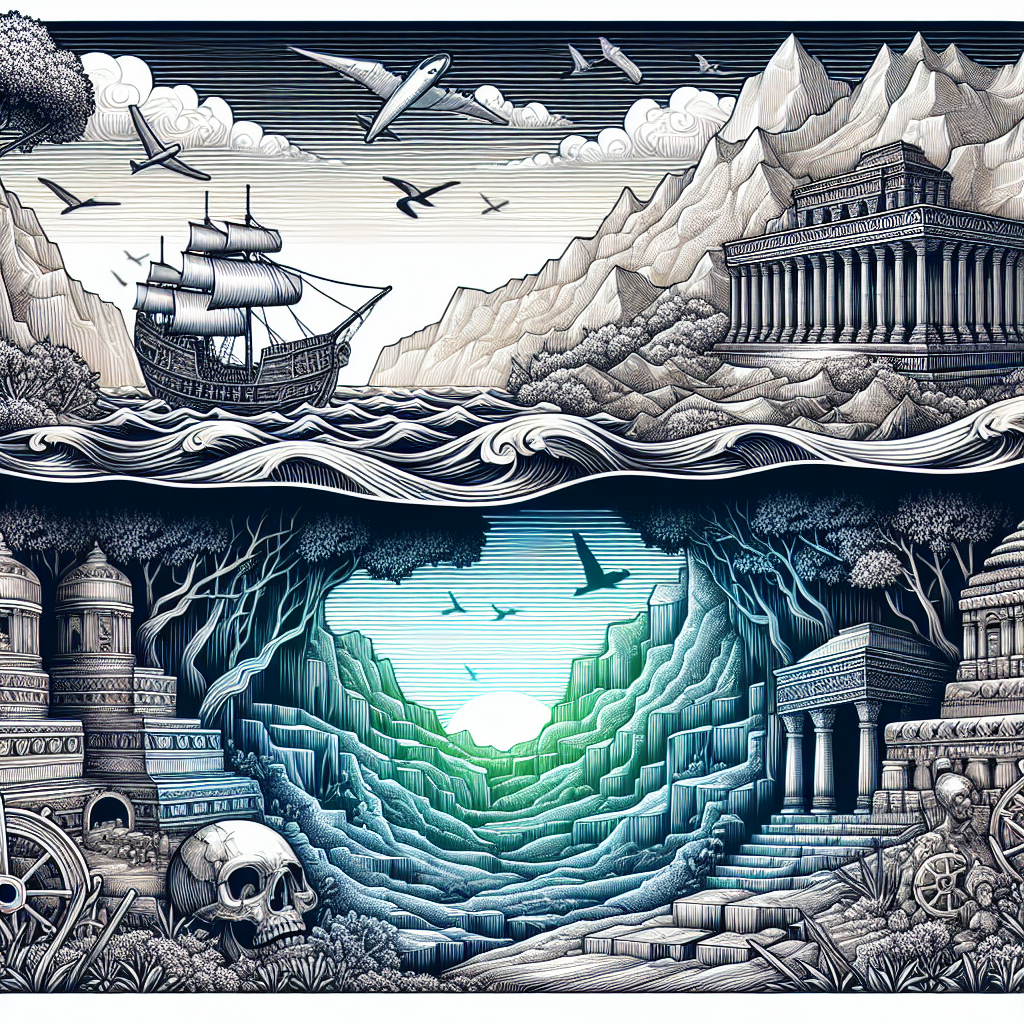Unearthed Wonders: The Lost Library of the Ancient World
At the heart of Alexandria, in ancient Egypt, rested the greatest collection of human knowledge – the Library of Alexandria. This ancient seat of knowledge boasted anywhere between 40,000 to 400,000 scrolls of text. Regrettably, the library is long gone, and most of its knowledge lost. Several theories surround its loss, among them Julius Caesar’s fires during his civil war in 48 BC, religious riots, and decline over time. Despite its dramatic disappearance, the Library of Alexandria continues to fascinate us with its brilliant past.
The Discovery of the Terra Cotta Army
In 1974, farmers in China’s Shaanxi province stumbled upon what is now considered one of the greatest archaeological finds of the 20th century – the Terracotta Army. This massive formation consists of more than 8,000 life-sized and distinctively crafted terracotta soldiers, horses, and chariots, all intricately arranged in battle formations. This grand army was created to accompany the tomb of China’s first emperor, Qin Shi Huang, in his journey after death. Remarkably, every soldier within the Terracotta Army has unique facial features and clothing, highlighting the impressive feat of ancient Chinese artisans.
The Secret Chamber in Tutankhamun’s Tomb
The tomb of Egyptian Pharaoh, Tutankhamun, discovered by archaeologist Howard Carter in 1922, gripped the world with its abundant undisturbed artifacts and a solid gold coffin. Recent years saw a restart of this historical frenzy when British Egyptologist Nicholas Reeves proposed that a hidden room lies within the tomb. Reeves suggested this secret chamber could potentially be Queen Nefertiti’s undiscovered tomb. Despite intensive exploration and high-tech scanning, the mystery remains, capturing imaginations worldwide and renewing our interest in the ancient world.
The Wonder of Ancient Roman Concrete
Roman concrete, known as opus caementicium, is an architectural marvel that has stood the test of time. Despite the exposure to harsh weather conditions, Roman constructions such as the iconic Pantheon and the Colosseum are still standing after thousands of years, demonstrating the Romans’ extraordinary engineering prowess. Unlike modern concrete, that weakens and cracks over time, Roman concrete seems to get stronger. Scientists discovered that the secret behind this historic durability lies in the concrete’s unique recipe, which incorporated volcanic ash, lime, and seawater. This combination led to a chemical reaction that produced a rare mineral – Al-tobermorite, strengthening the structures over time.
The Antikythera Mechanism: An Ancient Greek Computer
Found amongst ship wreckage off the Greek island of Antikythera, the Antikythera mechanism is a 2,000-year-old artifact shrouded in mystery. The intricately designed bronze gears and dials, housed in a wooden box, form an astronomical clock of sorts. It’s believed to predict celestial events, such as solar eclipses and even the dates of the Olympic Games. This ‘computer’ of ancient Greece astonishes modern scientists with its complex functionality and precise workmanship, reminding us of the technological prowess of ancient civilizations.
The Spherical Stones of Costa Rica
Scattered across the Diquis Delta in southern Costa Rica are nearly 300 spherical stones, known as Las Bolas. Ranging from the size of a basketball to over 2 meters in diameter, these stones have been dated back to the Chiriqui Period (800-1500 AD). The purpose and techniques of construction behind these spherical wonders remain a mystery. What was their purpose? A symbol of status or astronomical markers? Despite the enigma, these stone spheres stand as a testament to the abilities of prehistoric cultures, adding another layer to our understanding of our world’s rich history.
The Hidden City of Petra
Carved directly into vibrant red, white, pink, and sandstone cliff faces, Petra, the ‘Rose City,’ was the thriving capital of the Nabataean empire between 400 B.C. and A.D. 106. Placed strategically along the trade routes, Petra flourished with rich culture and architecture. Unfortunately, due to changing trade routes and a massive earthquake, the city was abandoned and forgotten with time. It was rediscovered in 1812 by Swiss explorer Johann Ludwig Burckhardt and remains one of the world’s most treasured archaeological sites.
From lost libraries, secret chambers, ancient computers, to impressive architectural formulas – our history brims with countless incredible discoveries and many more to unearth. They remind us of our rich past and the mysteries that are yet to be discovered. Every find brings us closer to understanding our human journey and continues to ignite the explorer in us all.
